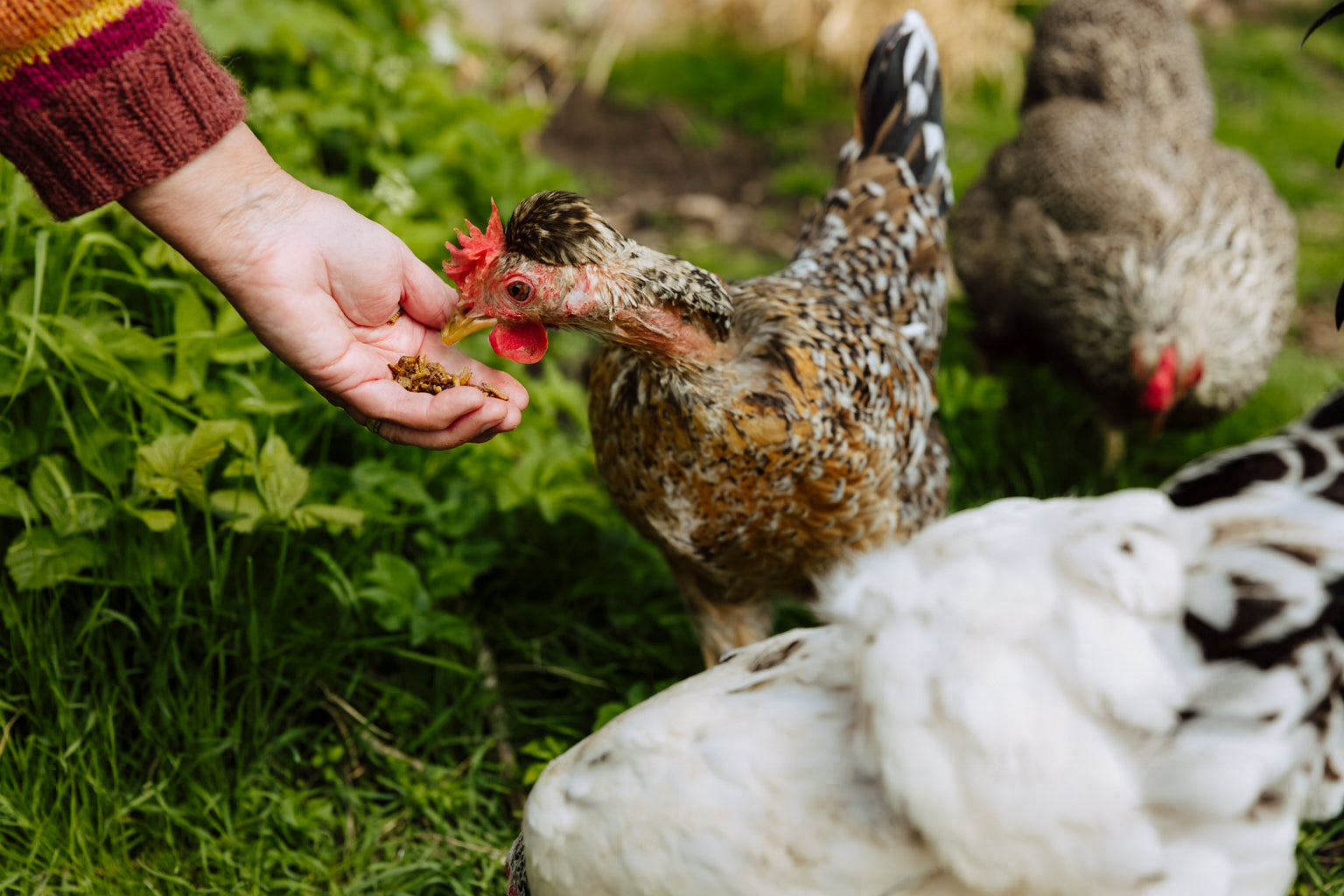It feels like no coincidence that molting season and Halloween overlap. Watching your chicken go from fully feathered to nearly butt naked overnight can be scary, especially if it's your first time. To help make the process easier, we’ve answered your most common molting questions. So hopefully the only spooks you get this fall are the ones on Halloween.
1. What is the chicken molting process?
Molting is a necessary yearly process where chickens lose their old feathers and replace them with healthy new ones. It’s a natural response to the decrease in daylight hours, which is why it usually happens from late summer through November. Typically, the feathers on the head drop first, followed by those on the neck, breast, body, wings, and finally the tail. As the feathers fall out, new pin feathers covered in a coating come through. This makes them look more hedgehog than chicken. When the coating eventually flakes off, their new feathers are ready to flaunt.
2. How long does it last?
For most chickens molting will last around 8 weeks, but for some it can go up to 16. How long it takes can vary depending on age, nutrition and environment, but generally it’s seen that better layers go through molts much faster compared to girls that produce less.
3. How long do chickens stop laying during molt?
Just as molting is triggered by shorter days, laying is improved by longer ones. However, most hens stop producing altogether during those 8-16 weeks because their energy shifts towards feather regrowth. Once their new feathers are out, egg production typically starts again and begins to increase as daylight hours do.
4. Is it painful and can I still handle them?
While it depends on the chicken, molting can unfortunately be an uncomfortable process. The area where the pin feathers meet the skin can be especially sensitive, which may explain why your usually affectionate chicken suddenly wants some space. During this time, it’s best to avoid handling them until they’re feeling like themselves again. Think of it like their “time of the month”. It’s uncomfortable while it lasts, but completely temporary.
5. How do chickens act when molting?
Remember how we said molting is like their time of the month? The comparison fits here too. With their skin more sensitive than usual, you might notice irritability and less activity. Plus, they may spend more time resting and preening rather than socializing. The best thing you can do is give them their space, keep their coop clean, calm, and stress-free, and hold off on introducing new flock members until molting season is over.
6. What helps with molting, should I change their diet?
Since feathers are made of about 85% protein, they’ll need a little extra during molt. A way to increase protein intake, without upset stomachs, is through supplementing their existing feed with natural high-protein treats. Our dried mealworms have 52% protein, 20% fat, plus essential vitamins and minerals. This way you’re supporting new feather growth, while giving them a treat they’ll love.
7. Why is my chicken molting so much, what should it look like?
Chickens can molt in different ways. Some go through a hard molt, losing most of their feathers at once and looking nearly bare overnight, while others go through a soft molt, shedding feathers more slowly and less noticeably. Although a hard molt can look scary, both are completely normal.
8. Why is my chicken molting outside of molting season?
Their annual molt is triggered by shorter daylight hours, so while it’s typically around late summer through to November, timing can vary depending on your location. If your chicken starts molting off-schedule, it could be due to stress factors like poor nutrition, dehydration, illness, sudden environmental changes, or predator scares. When in doubt, it’s always best to check with your vet.
9. Will they get cold and should I try to keep them warm?
While chickens can handle cold weather surprisingly well, they can be more sensitive to it during molt. If temperatures drop unexpectedly, think of it as a balance. You never want to overheat the coop or close off ventilation, but you do want to keep it dry and draft-free. Add some extra bedding to keep them comfortable, and make sure they’re getting enough protein to support new feather growth.
10. How can I stop my chickens from molting?
The short and long answer is - you can’t. Molting is a natural, necessary process that happens every year. The best thing you can do is keep their environment clean, stress-free, and make sure they’re getting a balanced diet with plenty of protein to help their feathers grow in strong.
We hope these molting FAQs have made the season feel a little less spooky. And if you’re ever unsure about your flock, checking in with your vet is always the best move.
Are you stocked up on protein for molting season?
With 52% protein, 20% fat, and essential vitamins and minerals, our Dried Mealworms help feathers grow back stronger than ever.
Shop Now


